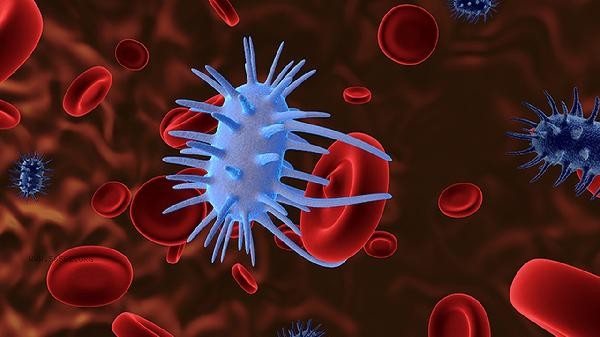A high distribution width of red blood cells usually indicates uneven size of red blood cells in the blood, which may be caused by iron deficiency anemia, megaloblastic anemia, chronic disease anemia, hemolytic anemia, myelodysplastic syndrome, and other reasons.

1. Iron deficiency anemia:
Iron deficiency anemia is a common cause of high red blood cell distribution width. Insufficient iron can affect hemoglobin synthesis, leading to a decrease in red blood cell volume and an increase in size differences. Patients may experience symptoms such as fatigue, dizziness, and pale complexion. Diagnosis can be confirmed through serum ferritin testing, and treatment requires supplementation of iron and adjustment of dietary structure.
2. Megaloblastic anemia:
Folic acid or vitamin B12 deficiency can lead to DNA synthesis disorders, resulting in the production of oversized immature red blood cells. Patients with this type of anemia have significant differences in red blood cell volume, often accompanied by glossitis and neurological symptoms. The detection of serum vitamin B12 and folate levels can provide a clear diagnosis, and targeted supplementation of nutrients is needed.
3. Chronic disease anemia:

Chronic infections, inflammation, or tumors can interfere with iron metabolism, leading to abnormal red blood cell production. This type of anemia is characterized by a slight increase in the width of red blood cell distribution, often accompanied by symptoms of the underlying disease. Treatment requires controlling underlying diseases and using erythropoietin if necessary. 4. Hemolytic anemia: Premature destruction of red blood cells can lead to compensatory proliferation of bone marrow, releasing immature red blood cells into peripheral blood. These newly formed red blood cells have a large volume, resulting in uneven red blood cell size. The patient may experience jaundice and splenomegaly, which need to be diagnosed through hemolysis related tests.
5. Abnormal bone marrow proliferation: When the hematopoietic function of the bone marrow is abnormal, pathological red blood cells with different shapes may be produced. This condition is common in hematological diseases such as myelodysplastic syndrome, and requires bone marrow biopsy to confirm the diagnosis. Some patients may require hematopoietic stem cell transplantation. When the distribution width of red blood cells is found to be too wide, it is recommended to improve blood routine, reticulocyte count, serum iron metabolism and other examinations. It is necessary to ensure balanced nutrition in daily life and consume foods rich in iron, folate, and vitamin B12 in moderation, such as animal liver and dark green vegetables. Avoiding excessive dieting, quitting smoking and limiting alcohol consumption, and maintaining a regular daily routine can help improve hematopoietic function. If accompanied by symptoms such as persistent fatigue and bleeding tendency, timely medical attention should be sought from the hematology department.









Comments (0)
Leave a Comment
No comments yet
Be the first to share your thoughts!